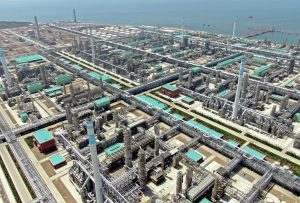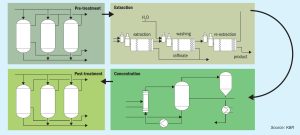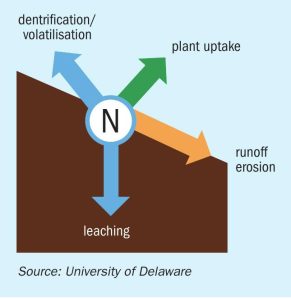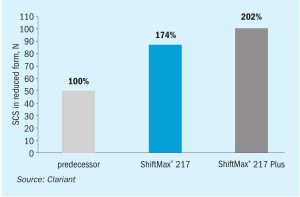
New Asian refining capacity
The refining industry continues to pivot towards Asia, with knock-on effects for sulphur output.

The refining industry continues to pivot towards Asia, with knock-on effects for sulphur output.

Casale, Saipem, Stamicarbon & Toyo Engineering Corporation showcase a selection of innovative technologies that have recently been brought to the market.

The newly-patented SWIFT process is designed to sequester fluorine at phosphoric acid plants in an environmentally responsible way. It can also offset the costs of fluorine management by generating a saleable dicalcium phosphate (DCP) end-product as an additional revenue stream. A number of capex and opex advantages provide the SWIFT process with highly favourable economics, as James Byrd of JESA Technologies explains.

Urease and nitrification inhibitors are cost efficient and easy to implement solutions for improving the nitrogen use efficiency (NUE) of urea ammonium nitrate (UAN). The use of inhibitors enables farmers to substantially reduce nitrogen losses and achieve their environmental targets, explains Thomas Profitt , Syensqo’s Global Enhanced Efficiency Fertilizer Manager, while improving crop yields and generating a positive return on investment.

KBR designs and builds customised phosphoric acid purification plants tailored to the individual demands of clients. Christopher Heikkilä, KBR’s Business Development Manager, outlines the process design requirements and the challenges associated with impurities removal.

Addressing the ‘leaky’ nature of nitrogen fertilizers is a longstanding priority for growers, fertilizer producers and retailers alike. Dr Karl Wyant, Nutrien’s Director of Agronomy, examines the valuable role enhanced efficiency fertilizers (EEFs) can play in improving nitrogen use efficiency.

Anton Kariagin and Stefan Gebert of Clariant discuss the benefits and commercial performance of the new low temperature shift (LTS) catalyst – ShiftMax 217 Plus. A case study demonstrates the benefits of this catalyst, providing ultra-low methanol formation resulting in increased ammonia production and/or energy savings.

The implementation of WSA technology to recover sulphur as sulphuric acid from lean sulphurous off-gases offers significant environmental benefits. These include waste reduction, resource efficiency and reduced overall CO2 e footprint, while also producing profitable sulphuric acid. By embracing such practices, industries can ensure improved or better consumption and production patterns and foster a more sustainable and responsible future. J. Feddersen and S. S. Johansson of Topsoe illustrate these benefits using three distinct industrial applications where WSA technology provides a smarter way to treat sulphurous off-gases. It is not only waste stream management in the three cases, but also reduced transportation of chemicals, reduced opex and reduced CO2 e footprint.

Falling volumes of sulphur from refining and sour gas could turn Europe into a sulphur importer.

Already the world’s largest exporter of sulphur, Abu Dhabi continues to expand its sour gas production and sulphur output.